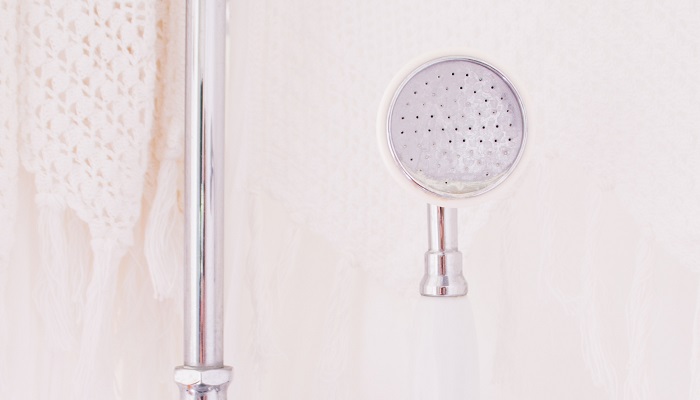Nothing beats having a nice cool shower after a long and tiresome day. Showers and baths are mainly used for hygiene, but for others, it is more than that. As simple as it seems to be, taking a shower is an effective way to distress and let go of everyday troubles.
What if your daily routine was disturbed by a loose shower head? What will you do if your shower head suddenly turned wobbly? Other problems may sprout if you do not fix them immediately. There can be leaks, and you might even need to replace them. Loose showerheads can mean trouble and frustration for a lot of people.
There is no need to think long and hard. Read on as we share with you some quick and easy fix to mend your loose shower head. Moreover, you can also discover more things about shower heads and what knots.
Contents
- 1 How Do You Fix a Loose Shower Head?
- 2 How Do I Tighten My Shower Head?
- 3 How Do You Tighten a Shower Head Without Scratching It?
- 4 Why Is My Shower Head Loose?
- 5 How Do I Stop My Shower Head From Rotating?
- 6 When Do You Need to Replace a Showerhead?
- 7 Is It Hard to Replace a Showerhead?
- 8 What Tools Do You Need to Replace a Showerhead?
- 9 How Often Should You Replace a Showerhead?
- 10 How Do I Prevent My Shower Head From Falling Down?
- 11 How Do I Get a New Shower Head?
- 12 How Much Does It Cost to Tighten or Replace a Showerhead?
- 13 Summary
- 14 Resources
How Do You Fix a Loose Shower Head?
It is inevitable for households to experience having a loose shower head. Showerheads installed incorrectly through walls or tiles will eventually run the risk of getting loose. The hole drilled for the showerhead may be too big, which is why it is unstable.
Did you notice how your shower head hangs and wobbles awkwardly? Your peaceful shower time may eventually be annoying if you can’t fix it soon. Fortunately, fixing a loose shower head is a no brainer. Tighten your showerhead, and it may be as good as new. Continue reading to know more about how to tighten your shower head. Expansion foam is one of the most convenient options to tighten a loose shower head on the wall. It will make the head sturdy.
Do you ever encounter issues with your showerheads become shaky? This may be due to the cavity or crevice where the shower is installed. All you have to do is fill the cavity up for it to be stable again. All you have to do is follow the simple steps, guaranteeing you a quality fix.
How Do I Tighten My Shower Head?
The best way to fix a loose shower head is by tightening the area where it came loose. Before you proceed to the steps, make sure to prepare the necessary tools listed below.
- Epoxy putty
- Masking Tape
- Screwdriver or Pliers
- Rubber gloves
And now the steps:
- On your shower head, you will see a cover or trim ring. You have to remove this for you to see the crevice where your shower head is attached. You can make use of the screwdriver or pliers to loosen and remove the cover.
- If you don’t want your wall to have traces of expansion foam left on it, use masking tape to secure the area around the showerhead where you don’t want to mess with it.
- Get your rubber gloves and put them on. Open the packaging of the epoxy putty. Take a small piece of epoxy, just enough amount to fill up the hole. Remember that you can opt to buy the smallest epoxy putty, especially if you just need it for this project. You will not use a lot of it so if you want to save money, buy the smallest one.
- Shape the putty material until it becomes sticky. You can shape it in a way that it can go right around the hole.
- Feed the epoxy into the crevice. Make sure to fill up the around the pipe. Apply the epoxy to the showerhead’s pipe as well to secure it tightly.
- Wait for 15 minutes or more. The curing of the foam depends on the product you use. Once you notice that it is dry, you can start removing the excess product so that you can easily put the trim ring back.
If you are still unsure, you can watch the following video:
How Do You Tighten a Shower Head Without Scratching It?
Not everyone has the innate ability to perfect do-it-yourself projects. There are times when simple projects like tightening your shower head can turn into a mess. No one wants to see a brand new showerhead damaged, right?
You have to take extra care for it to remain at its best state. Here are some of the handy but simple things that you should try using when repairing your showerhead.
Masking Tape
This is one of the allies of every do-it-yourself enthusiast out there. If you are planning to use a wrench or pliers while repairing your loose showerhead, wrap the area with some masking tape. Grasping it using the wrench may leave some scratches that are not pleasing to the eye. The masking tape will serve as additional protection for your shower head.
Rags
You can easily find rags around your house. Pick a clean rag and wrap it directly around the area where you will be using the wrench or pliers. You can double the layer of the rag if you want to have an additional layer of protection for the showerhead or pipe.
Strap Wrench
You can invest in a good strap wrench instead of using the conventional wrench. This wrench has a durable rubber loop, which helps keep your shower head and pipe scratch-free when you tighten it down. You will no longer need a rag or masking tape if you have this reliable strap wrench.
Why Is My Shower Head Loose?
The reason why the showerhead becomes loose can be because of the poor or incorrect installation of the plumber. It may also be because of the loose screws that are attached to the walls. You can encounter this when you bought an old house and the plumbing work around the house is old too. The hole where the showerhead is installed gets loose over time.
How Do I Stop My Shower Head From Rotating?
Rotating showerheads are annoying. Imagine the trouble of rotating while you are full of soap suds just because your shower head is rotating. You will have to adjust and bear with the hassle just to continue showering. If you want to stop your shower head from rotating, all you have to do is tighten your showerheads. Also, check if the pipe or shower stems are not attached firmly to the wall.
When Do You Need to Replace a Showerhead?
A single showerhead can’t be used forever. It would help if you eventually replaced it because it may be faulty already or simply because it is dirty. What should you do now when your shower head is damaged beyond repair? Not only that, but you also have to replace your showerheads because of hygienic concerns. If the simple tricks and fix can no longer mend it, the best solution is to buy a new one.
Is It Hard to Replace a Showerhead?
Changing your showerheads is an upgrade in the bathroom that you can surely afford. It is a budget-friendly approach to improving your bathroom’s appearance and function without the need to remodel it. It can take you less than an hour or so to complete the project. With the right tools and information, changing it will just be a simple task for you. If you are not confident with your plumbing techniques, you can always look for a plumber to do the job.
What Tools Do You Need to Replace a Showerhead?
Have you decided to take on the challenge of replacing your shower head? Do not fret since these steps below got you covered. We will share the tools you will need and the steps you need to replace a showerhead with you. Make sure that you have all the required material before you proceed with the steps.
- Masking tape
- Showerhead adapter kit
- Teflon tape
- Wrench or pliers
And now the steps:
- Prepare your work area first. Ensure that you turn off the water source because you don’t want to take an untimely bath all of a sudden. If you don’t want to scratch or dirty the floor of your bathroom or other surfaces that may be in contact during the project, use old newspapers or old rags to cover them.
- Get your wrench and pliers and remove the old showerhead. Again, to avoid it from getting scratched, make use of rags or tape to wrap it before you make use of the pliers.
- When you remove the old showerhead, attach some Teflon tape to the shower stem. Take note that when you wrap the tape around the threads of the shower stem, it is in the same way where the new shower head will be tightened. If you failed this, it might cause the Teflon tape to tear and can cause leaks in the long run.
- You can now attach the new shower head to the shower stem. Use your hand to tighten it so that you can avoid scratching it. If you need to tighten it with a wrench, use the same procedure in step number two.
- Open the water source and try the result of your hard work! Check if there are leaks or if the showerhead is tightened well.
Or better, you can watch the following video:
How Often Should You Replace a Showerhead?
When you ask people if they replace their showerheads, you might be surprised because some of them had the same shower head for about 20 years or more. For as long as it is functioning, people may neglect to change it. Is it a need to replace your showerheads? Discover the reasons behind why you should change your showerheads.
It is recommended to change your showerheads once every six months. The main reason is that the bathroom is a moist area where there is a lot of bacteria build-up. We all know how tap water is treated with chemicals. You can never be sure how additives in water and settles in your shower head. You can inspect the holes of your showerheads. Some might have small, white, and rocky sediments forming within. Those sediments are calcium build-up.
Aside from that, showerheads can also accumulate black mold. Unlike calcium build-up, black molds are extremely stubborn to get rid of. It will be expensive to hire a professional to remove them. Instead of spending a fortune on repairs, you might just consider replacing your showerheads.
How Do I Prevent My Shower Head From Falling Down?
When your shower head is falling, it means that it is loose. If you want to stop your showerheads from slipping and falling, then we have the solution for you. The steps on how to tighten your shower head is already laid out for you above. Make sure to follow each step correctly for you to have the best results. You can easily tighten your showerheads on your own. Moreover, you don’t even need to prepare a lot of tools. With a crafty hand, you can say goodbye to your falling showerheads.
How Do I Get a New Shower Head?
Showerheads are often neglected until you need to shop for a new one. It seemed like an easy task at first, but when you realize that you have to dive into the world of water pressure and functionality, it might be overwhelming. We are here to guide you in finding your new shower head. It’s time to list down some of the things that you should bear in mind before getting yourself a new shower head.
- Know what type of shower head you want and need. You can pick from choices like wall-mounted, hand-held, or ceiling showerheads.
- Make sure that the water pressure that you have at home is appropriate with the shower head that you are going to buy. Knowing the water pressure needed is essential because the water flow will not be satisfactory if it is not compatible.
- Figure out what kind of spray setting you want. Some showers have different settings, but you can choose from wide, targeted, rinse, or pulsating spray settings.
- Pick a shower head that goes with the vibe of your bathroom’s décor. There are many fancy-looking shower heads out there, so you will not run out of choices.
How Much Does It Cost to Tighten or Replace a Showerhead?
The amount you will spend when you tighten your shower head is almost free if you have all the materials around. The epoxy putty will cost you about $6. If you decided to buy a new showerhead, prepare an amount ranging from $75 to $200, depending on the functionality and design. It would cost you more if you decided to let a professional install it. The price ranges from $242 to $636, according to porch.com.
Summary
Taking a shower is like rewarding yourself to step out of your busy world. It gives you the tranquillity you crave at the end of the day. The steam and pulsating drops of water is a physical way of pampering, and getting rid of muscle strains.
It gives you time to contemplate things. It can calm you down to give yourself the alone time you need. Showers are the first or last thing you do every day. It is a simple routine that can boost your mood for the whole day. Now that you have a functional and reliable shower head, you can now put on some music and enjoy your shower time again.
Resources
Image credits – Photo by Abigail Lynn on Unsplash
Shower head on Wikipedia




